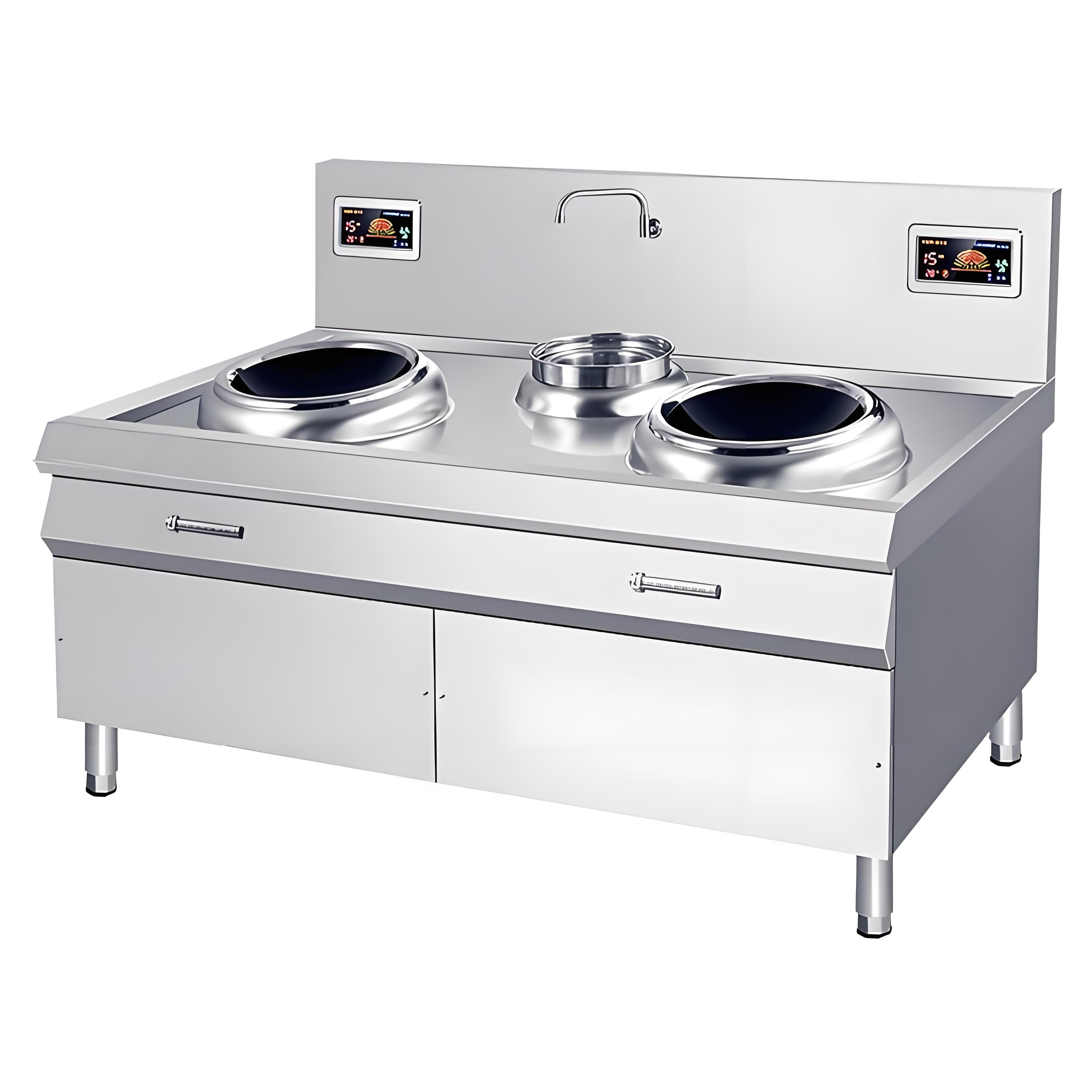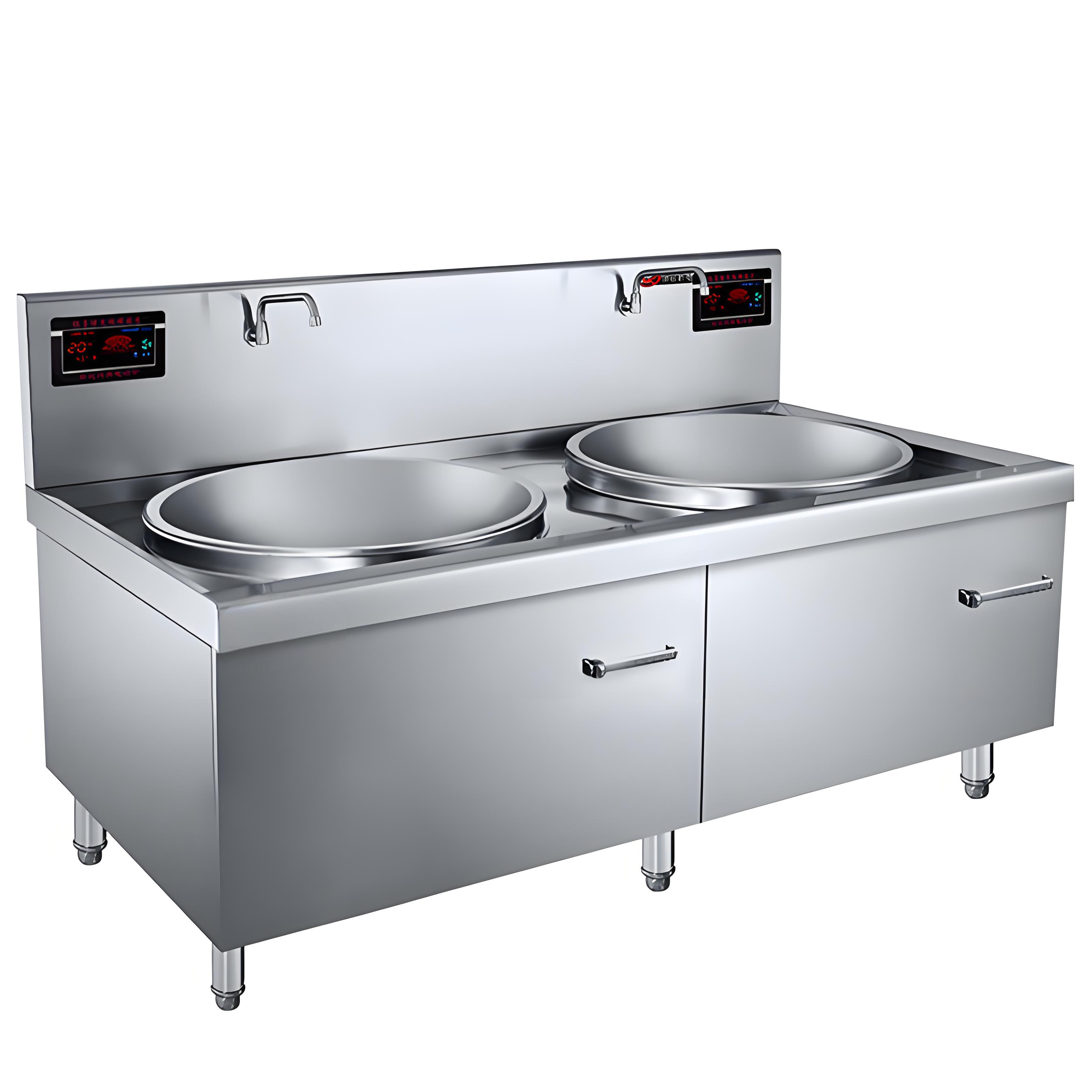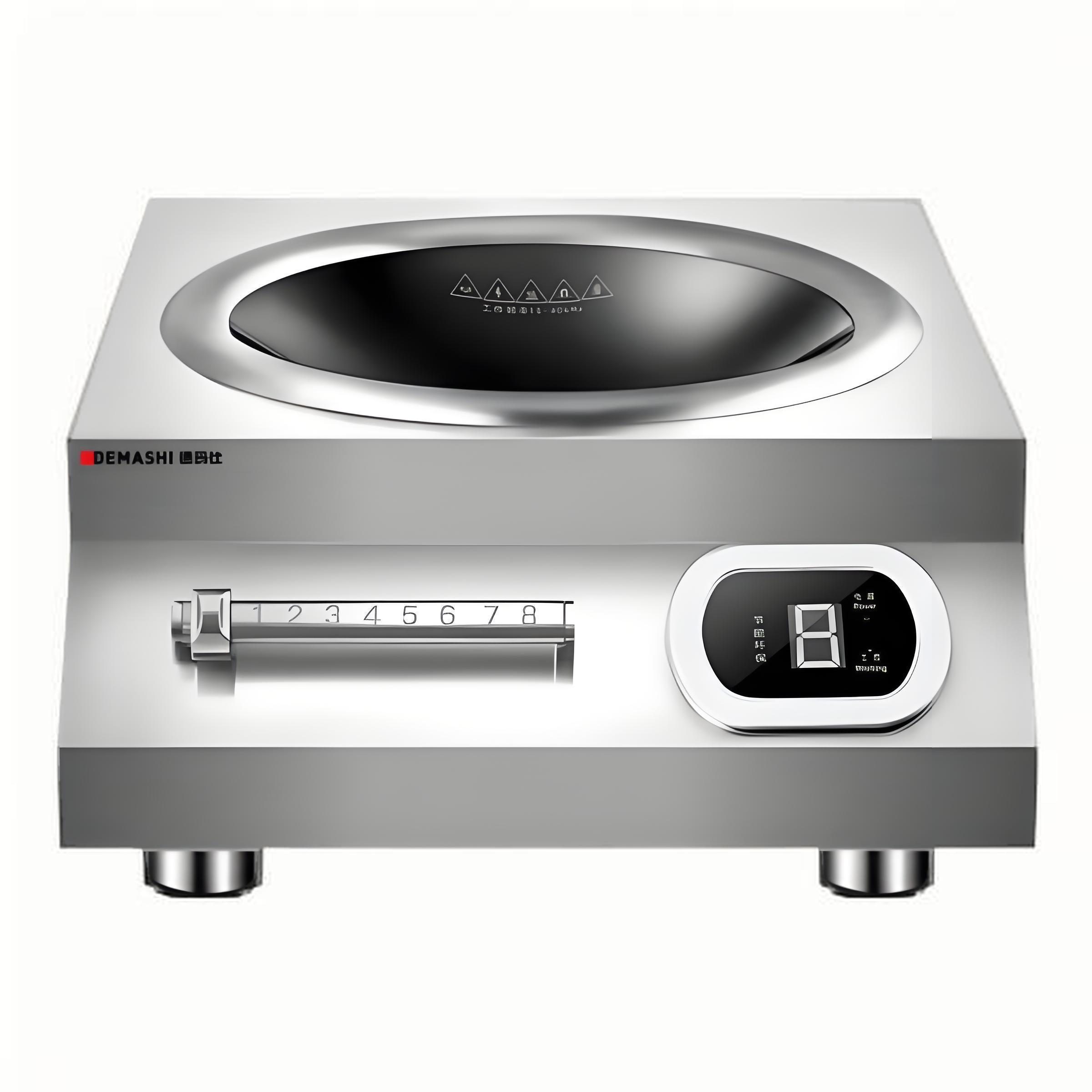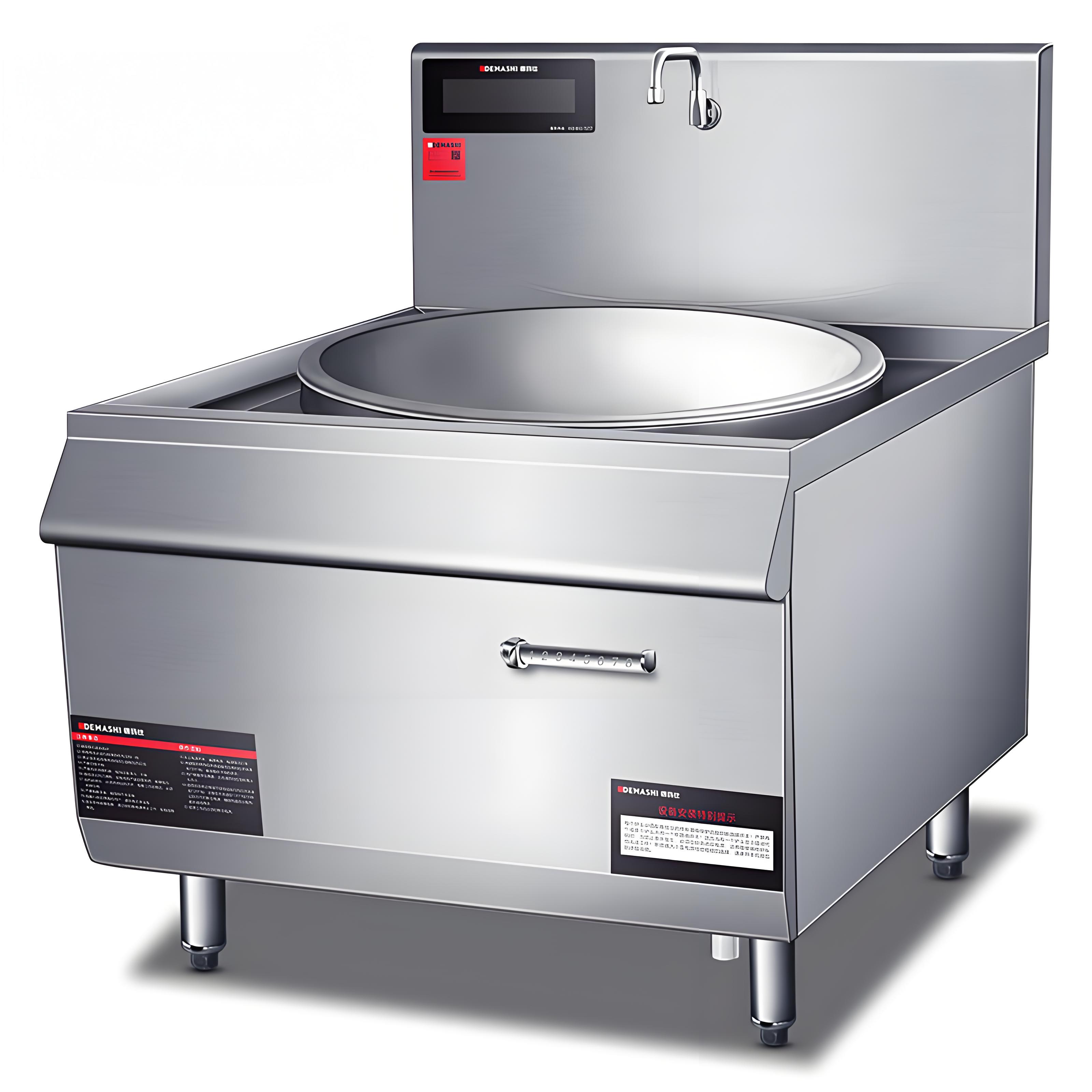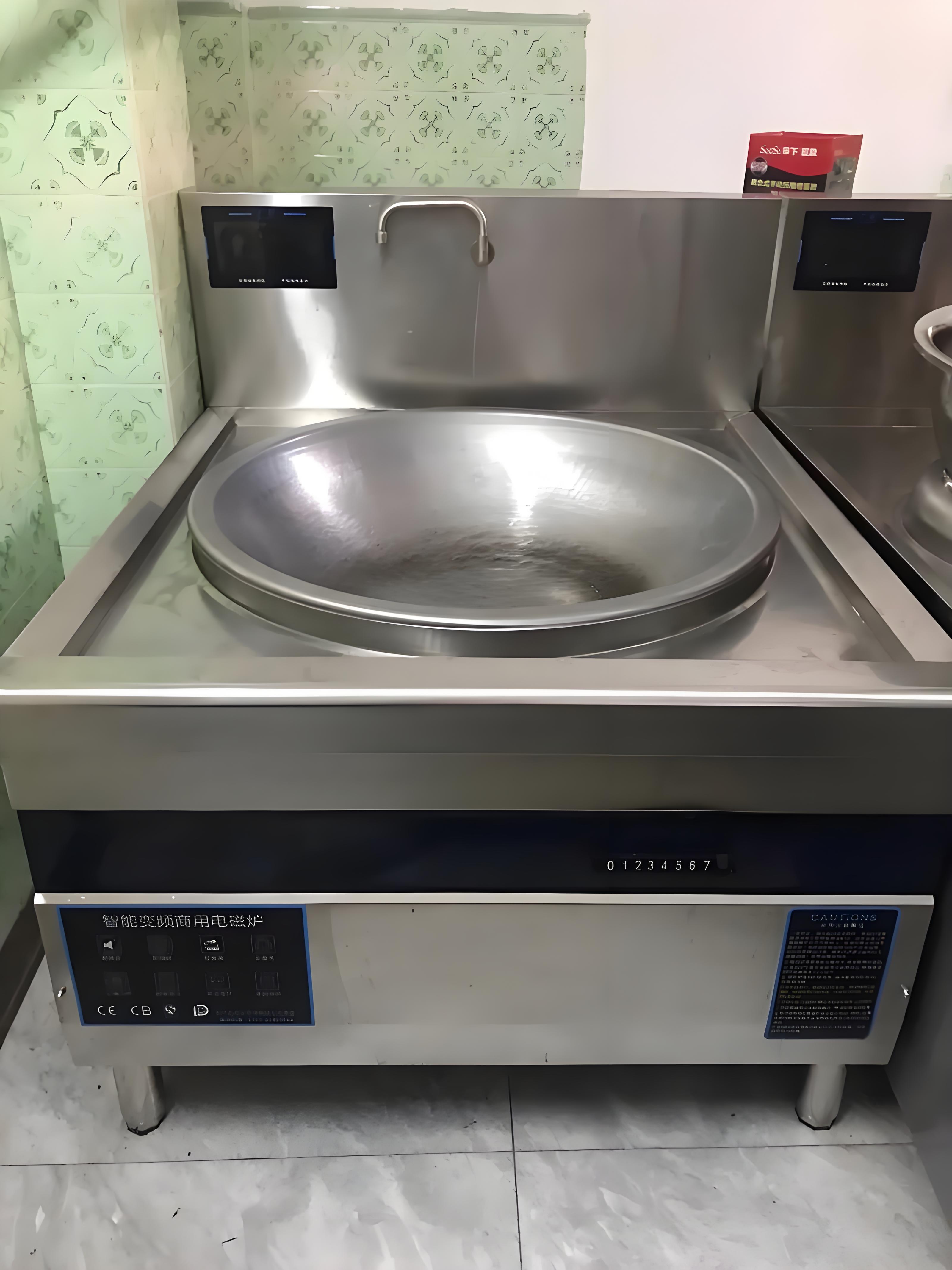As someone who’s spent years working with commercial kitchen equipment, from bustling restaurant kitchens to catering operations, I’ve fielded countless questions about cookware compatibility. One question that comes up frequently is, “Can stainless steel pots be used on a commercial induction cooker?” It’s a practical concern for chefs, restaurant owners, and even home cooks transitioning to induction technology in high-output settings. Having tested various cookware materials on induction cookers and overseen their use in professional environments, I’m here to share my insights. In this article, I’ll explain how induction cooking works, why stainless steel compatibility matters, and what you need to know to ensure your stainless steel pots work effectively on a commercial induction cooker—all based on real-world experience and technical know-how.

How Induction Cooking Works: The Basics
Before diving into whether stainless steel pots are suitable, let’s clarify how induction cooking operates. Unlike gas or electric stoves that heat cookware through direct flame or a hot coil, induction cookers use electromagnetic fields to heat the cookware itself. A copper coil beneath the cooker’s surface generates a magnetic field when powered, inducing an electric current in the cookware. This current creates heat directly in the pot or pan, making induction cooking fast, efficient, and precise.
For this process to work, the cookware must be ferromagnetic—meaning it can be magnetized. This is where material choice becomes critical. I learned this early on when setting up a commercial kitchen for a client. We tried using a non-magnetic aluminum pan on an induction cooker, and it simply wouldn’t heat. That experience taught me to always check cookware compatibility, especially in high-stakes environments where efficiency is everything.
Can Stainless Steel Pots Be Used on Commercial Induction Cookers?
The short answer is: Yes, many stainless steel pots can be used on commercial induction cookers, but not all stainless steel is created equal. The compatibility depends on the specific type of stainless steel and its magnetic properties. Let’s break it down.
Why Stainless Steel Matters
Stainless steel is a popular cookware material in commercial kitchens due to its durability, corrosion resistance, and ease of cleaning. However, stainless steel alloys vary, and their ferromagnetic properties determine induction compatibility:
Ferromagnetic Stainless Steel (e.g., 400 Series): Grades like 410 or 430 contain enough iron to be magnetic, making them ideal for induction cooking. These alloys respond well to the electromagnetic field, heating up quickly and efficiently.
Non-Ferromagnetic Stainless Steel (e.g., 300 Series): Grades like 304 or 316, commonly used in high-end cookware, are often non-magnetic (austenitic) and won’t work on induction cookers unless they have a magnetic base added during manufacturing.
In a busy restaurant kitchen I consulted for, we tested a range of stainless steel pots. The 430-grade pots heated perfectly, while a 304-grade pot sat cold on the induction surface, frustrating the chef until we swapped it out.
Testing for Induction Compatibility
To determine if your stainless steel pot is induction-compatible, try this simple test I’ve used countless times:
Magnet Test: Hold a refrigerator magnet to the base of the pot. If it sticks firmly, the pot is likely ferromagnetic and suitable for induction. If it doesn’t stick or only clings weakly, it won’t work.
Check Manufacturer Specs: Look for labels like “induction-ready” or “induction-compatible” on the pot or its packaging. Many manufacturers now specify this for commercial-grade cookware.
Base Construction: Some stainless steel pots have a layered or encapsulated base (e.g., a magnetic steel or iron core sandwiched between non-magnetic stainless steel). These are designed for induction even if the main body is non-magnetic.
I once helped a catering company avoid a costly mistake by testing their existing cookware with a magnet before investing in a new induction system. Half their pots were incompatible, so we prioritized ferromagnetic replacements.
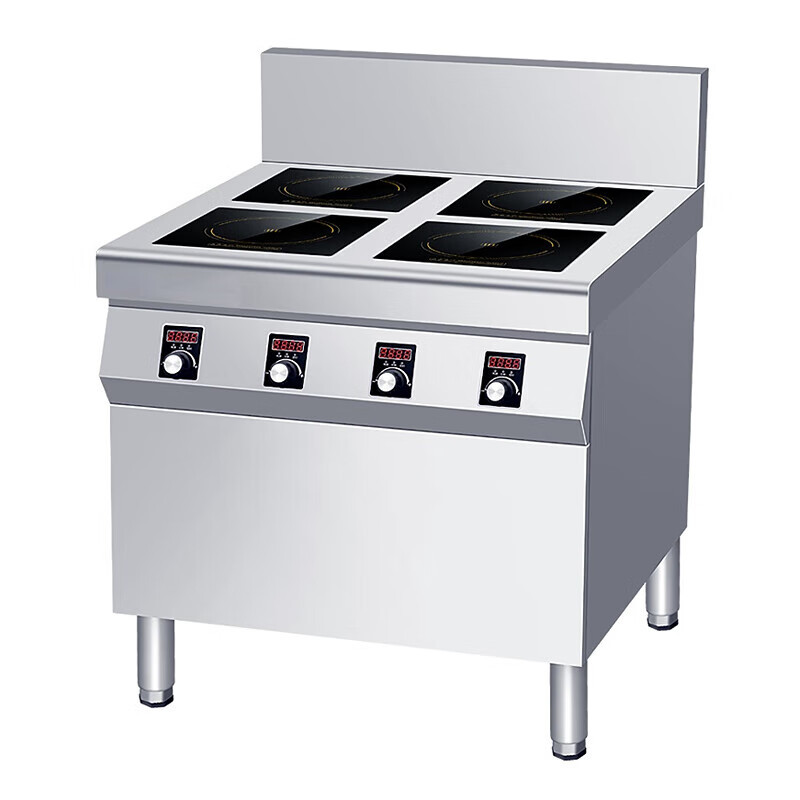
Key Factors to Consider for Stainless Steel Pots on Commercial Induction Cookers
Using stainless steel pots on a commercial induction cooker isn’t just about compatibility. To ensure optimal performance, safety, and longevity, consider these factors based on my experience:
1. Material Grade and Construction
Ferromagnetic Grades: Opt for 400-series stainless steel (e.g., 430) or pots with a magnetic base. These ensure efficient heat transfer.
Multi-Ply Construction: Many high-quality stainless steel pots have a tri-ply or five-ply design with an aluminum or copper core for even heating. Ensure the base is magnetic.
Thickness: Thicker bases (3-5 mm) provide better heat distribution and prevent warping under high heat, common in commercial settings.
In a high-volume kitchen, I recommended tri-ply 430 stainless steel pots with a 4 mm base. They heated evenly and withstood daily use without warping, unlike thinner pots that buckled after a month.
2. Base Flatness and Contact
Induction cookers require direct contact between the pot’s base and the cooking surface for efficient heating. Stainless steel pots with flat, smooth bases work best. Warped or uneven bases reduce contact, leading to slower heating and energy loss. I’ve seen chefs struggle with older pots that wobbled on the induction surface, causing inconsistent cooking results. Always check for a flat base when purchasing or using existing cookware.
3. Size and Fit
Commercial induction cookers have specific cooking zones (typically 6-12 inches in diameter) where the electromagnetic field is strongest. Ensure your stainless steel pot’s base matches or slightly exceeds the zone’s size for optimal performance. Too small, and it won’t heat efficiently; too large, and the edges may not heat evenly.
During a kitchen setup for a food truck, we found that 8-inch pots were too small for the cooker’s 10-inch zone, leading to slow boiling times. Switching to 10-inch base pots solved the issue.
4. Durability for Commercial Use
Commercial kitchens demand cookware that can handle high heat, frequent use, and rough handling. Stainless steel pots, especially 400-series or multi-ply designs, are durable but vary in quality:
High-Quality Options: Look for heavy-gauge stainless steel (18/10 or 18/8) with reinforced handles and thick bases.
Avoid Thin Pots: Thin stainless steel (e.g., <1 mm) can warp or dent under commercial demands, reducing induction efficiency.
In a catering operation, I replaced thin 304-grade pots with 430-grade, 3 mm-thick models, which held up to daily boiling and sautéing without issues.
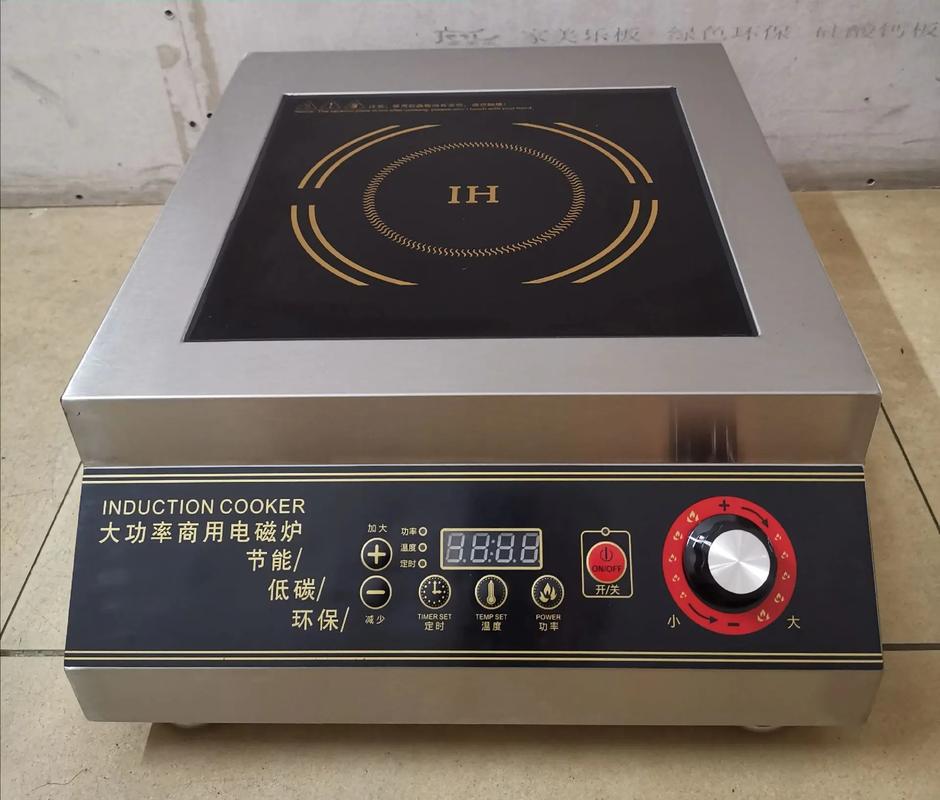
5. Maintenance and Cleaning
Stainless steel is easy to clean, but commercial induction cooking can lead to stuck-on food or stains due to high heat. Use non-abrasive cleaners and scrubbers to maintain the pot’s base, as scratches can reduce induction efficiency. I’ve found that soaking pots in warm, soapy water before scrubbing prevents damage and keeps them induction-ready.
Comparison Table: Stainless Steel for Induction Cooking
To help you choose the right stainless steel pot, here’s a table summarizing key considerations based on my testing:
| Feature | 400-Series (e.g., 430) | 300-Series with Magnetic Base | Non-Magnetic 300-Series |
|---|---|---|---|
| Induction Compatibility | Yes | Yes | No |
| Durability | High | Moderate to High | Moderate |
| Heat Distribution | Good (with multi-ply) | Excellent (with core) | N/A |
| Cost | Moderate | Higher | Moderate |
From this, 400-series stainless steel or 300-series with a magnetic base are the best choices for commercial induction cookers.
Practical Tips for Using Stainless Steel Pots on Commercial Induction Cookers
Here’s what I’ve learned from years of working with induction systems in professional kitchens:
Verify Compatibility: Always perform the magnet test or check manufacturer specs before purchasing or using stainless steel pots.
Choose Flat-Bottomed Pots: Ensure the base is smooth and flat for maximum contact with the induction surface.
Match Pot Size to Cooking Zone: Select pots that align with the cooker’s zone size (check the manual for dimensions).
Invest in Quality: Opt for heavy-gauge, multi-ply stainless steel for durability and even heating in commercial settings.
Maintain Properly: Clean with non-abrasive tools and check for warping regularly to ensure long-term performance.
In a restaurant kitchen overhaul, I helped the team switch to 430 stainless steel pots with flat, 4 mm-thick bases. The result was faster cooking times and fewer replacements compared to their old, mismatched cookware.
Potential Challenges and Solutions
Using stainless steel pots on commercial induction cookers isn’t without challenges. Here’s how to address common issues:
Non-Compatible Pots: If your stainless steel pot isn’t magnetic (e.g., 304-grade without a magnetic base), it won’t heat. Solution: Replace with 400-series or induction-ready 300-series pots. I’ve seen chefs waste time trying to heat non-compatible pots, so always test first.
Warping: Thin or low-quality stainless steel can warp under high heat, reducing contact and efficiency. Solution: Choose thick, multi-ply pots and avoid rapid temperature changes (e.g., placing a hot pot in cold water).
Uneven Heating: If the pot’s base is too small or uneven, heating may be inconsistent. Solution: Match pot size to the cooking zone and ensure a flat base.
Scratches or Stains: Rough cleaning can scratch the base, affecting induction performance. Solution: Use soft scrubbers and non-abrasive cleaners.
In a catering kitchen, we fixed uneven heating by replacing undersized pots with ones matching the induction zone, boosting efficiency significantly.
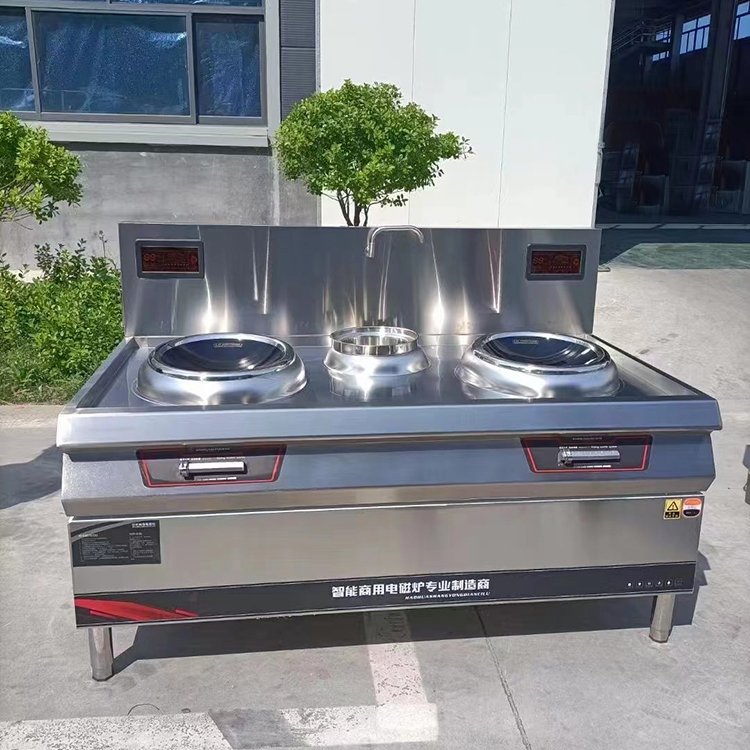
Alternatives to Stainless Steel Pots
If stainless steel isn’t ideal or you have non-compatible pots, consider these induction-ready alternatives:
Cast Iron: Highly ferromagnetic and durable but heavy and slow to heat. Great for slow cooking or searing.
Carbon Steel: Similar to cast iron but lighter, with excellent induction compatibility. Requires seasoning to prevent rust.
Induction-Compatible Aluminum: Some aluminum pots have a magnetic steel base added for induction use, offering lightweight performance.
For a food truck with limited space, I recommended carbon steel pans for their lighter weight and induction compatibility, complementing their stainless steel pots.
Special Considerations for Commercial Induction Cookers
Commercial induction cookers are more powerful (typically 3,000-5,000 watts) than residential models, so they demand robust cookware. Here’s what to keep in mind:
Power Requirements: Ensure your stainless steel pots can handle high heat output without warping. Thicker bases are essential.
Continuous Use: Commercial kitchens require pots that withstand hours of cooking. 400-series or multi-ply stainless steel is ideal.
Safety Features: Induction cookers shut off without compatible cookware, so always verify pot compatibility to avoid workflow disruptions.
In a high-volume restaurant, we upgraded to 5 mm-thick 430 stainless steel pots to match the cooker’s 4,000-watt output, ensuring consistent performance during peak hours.
Conclusion: Stainless Steel Pots on Commercial Induction Cookers
From my years of working with commercial kitchens, I can confidently say that stainless steel pots are an excellent choice for commercial induction cookers, provided they’re made from ferromagnetic grades like 400-series or have a magnetic base. By choosing high-quality, thick-bottomed pots, ensuring proper size and contact, and maintaining them well, you’ll maximize efficiency, durability, and cooking performance. Whether you’re running a restaurant, catering business, or food truck, the right stainless steel pots can make your induction cooker a powerhouse in the kitchen.
Before buying or using your pots, do the magnet test, check the specs, and invest in quality to avoid headaches. With the right cookware, you’ll be whipping up dishes with speed and precision in no time.
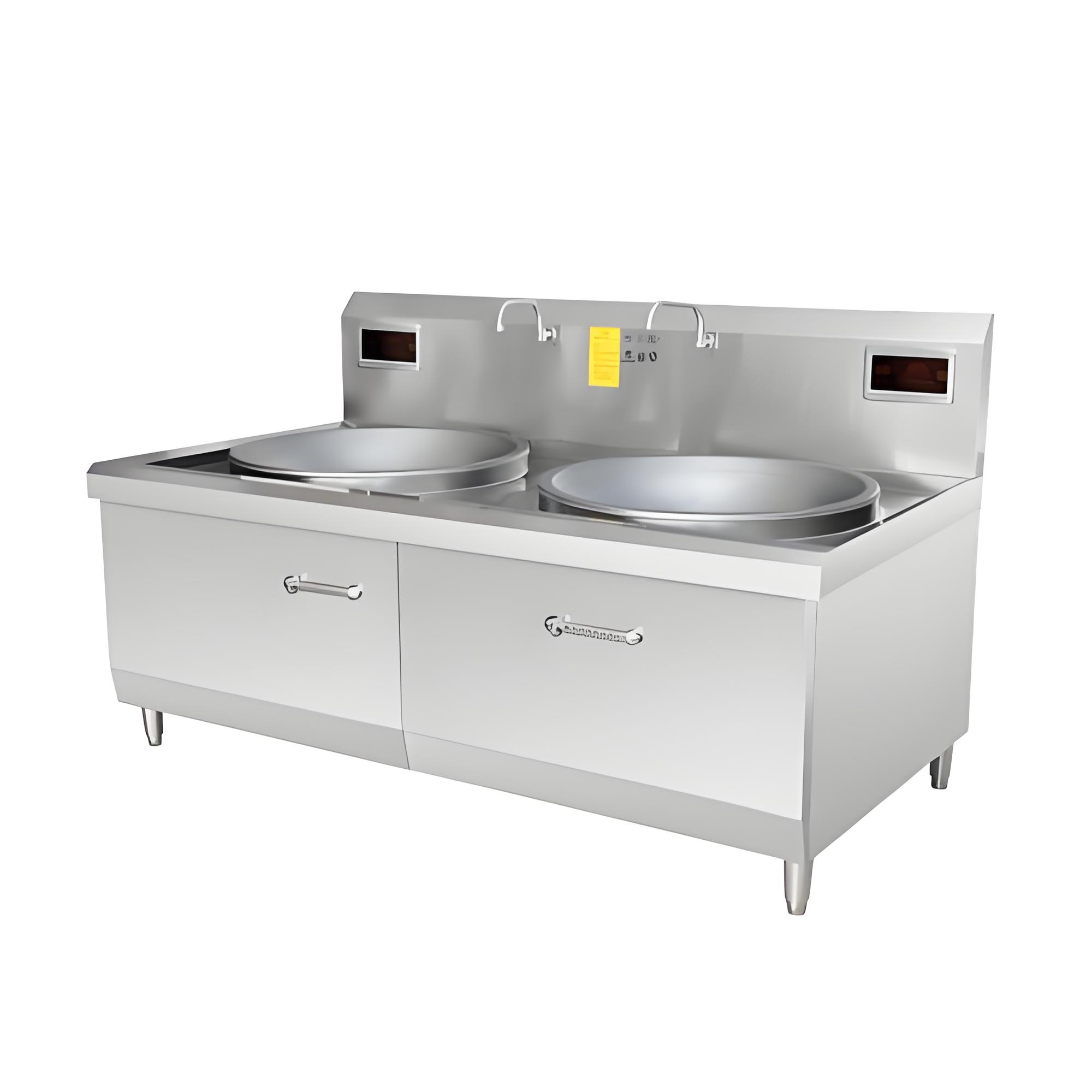
Frequently Asked Questions
1. How do I know if my stainless steel pot is induction-compatible?
Perform the magnet test: if a magnet sticks firmly to the base, it’s likely compatible. Check for “induction-ready” labels or 400-series stainless steel in the specs.
2. Can I use 300-series stainless steel pots on an induction cooker?
Only if they have a magnetic base (e.g., with a steel or iron core). Standard 304 or 316 stainless steel is non-magnetic and won’t work.
3. Do stainless steel pots heat evenly on commercial induction cookers?
Yes, especially multi-ply pots with aluminum or copper cores. Ensure the base is flat and matches the cooker’s zone size for best results.
4. How do I clean stainless steel pots used on induction cookers?
Use warm, soapy water and a non-abrasive sponge. Avoid harsh scrubbers to prevent scratches that could reduce induction efficiency.
5. Are there affordable induction-compatible stainless steel pots for commercial use?
Yes, 400-series stainless steel pots are cost-effective and durable. Look for mid-range, heavy-gauge options to balance quality and budget.
I hope this guide answers your questions about using stainless steel pots on commercial induction cookers! If you have specific scenarios or need further advice, share them below, and I’ll offer tailored insights from my experience.
